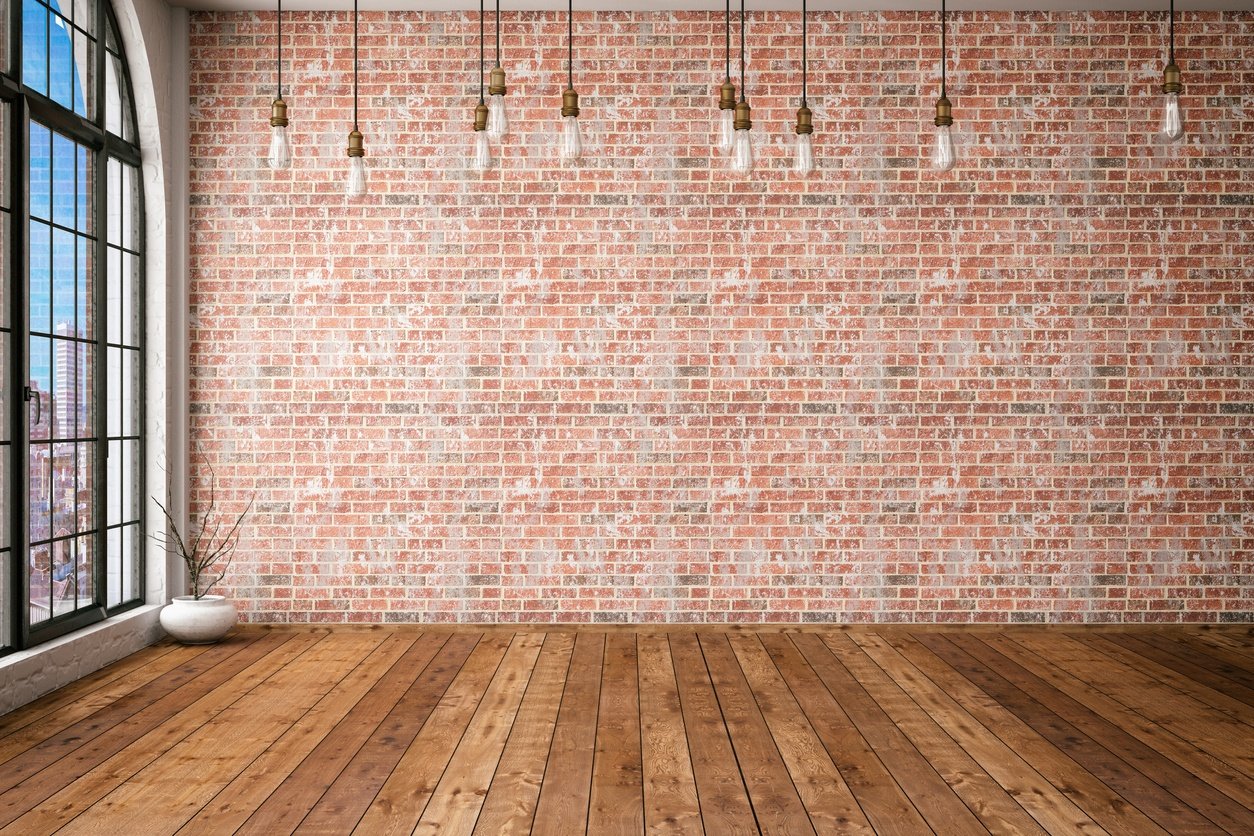Renovating a rental property isn’t like flipping a house. Fixing up a property so you can put it on the market is all about curb appeal. Hardwood flooring, marble countertops, and a chandelier above the staircase sell well because they’re pretty. But they break. Marble countertops absorb stains, and the seal wears down. Chandeliers are hard to clean. Even the best wood floors will warp and develop scratches over time.
So if you’re putting a house on the rental market, you have two competing interests: curb appeal and durability. You need improvements that look great at the beginning of a tenant’s stay and aren’t completely destroyed by the time they leave. Or, if destruction is inevitable, you need something that’s cheap and easy to replace. That starts with the flooring.

What is the best type of flooring material for a rental house?
There is no absolute answer, though there is one option that comes close. You have to pick the flooring materials that fit your property’s neighborhood and target market.
For example, townhouses valued in the high hundreds of thousands of dollars may need those hardwood floors. The maintenance costs will be high, but your tenants will accept that. But if you have a property with a monthly rental fee of $900, wood isn’t in the budget.
What do other properties in your neighborhood have?
To find out what flooring options are typical in your housing market, check out the competition. There are always other rental properties looking for tenants, so go to an open house. Depending on your region, you will probably find carpet, laminate, or tile. They’re all good options because they’re easy to clean or replace.
In fact, many houses will have a combination of the three types. The bedrooms and hallways will have carpet. The living room and kitchen will have laminate or vinyl. The laundry room and bathrooms will vinyl or tile. You can see the competing interests in each choice. Bedrooms look warmer with carpet, and they don’t face a high degree of muddy traffic or food stains like the main rooms. The living room and kitchen can’t have absorptive materials like carpet, but there’s also a lot of square footage; professionally installed tile gets expensive quickly. Bathrooms and laundry rooms are both small and have a lot of moisture, so tile becomes much more reasonable.
Are you installing the floors yourself or hiring contractors?
New flooring isn’t expensive just because of the materials. It’s the labor that will eat into your budget, especially for anything but carpet. At the low end, you can expect the cost of installation to equal the cost of the flooring itself, and that includes any vapor barriers, underlayment, and mortar. The price gets higher as service quality goes up. If you have an octagonal dining room or you want the flooring to be seamless from room to room, expect to pay even more.
If you want to hire contractors but you want to minimize the expense without risking quality, use a combination of carpet and artificial wood planks. Professionals can quickly, and inexpensively, cut and tack carpet into place in the bedrooms. Carpet has to be replaced after each tenant, but it’s one of the cheapest acceptable materials.
Then you can devote most of your flooring budget to laminate wood planks in the main living areas and vinyl in the bathrooms and laundry room. If you don’t want two types of artificial wood, look for laminate planks that come with waterproofing options. It will cost extra, but you can decide if that’s right for your house’s expected rental income.
If you want to handle the flooring entirely by yourself, use wood laminate or vinyl planks. Carpeting is time-consuming to install yourself, and it can easily come undone unless you have years of experience. Laminate and wood planks, on the other hand, are floating floors that you can lock together with a rubber mallet. All you need is a saw or a utility blade, depending on the material type, to cut the right angles.
Some rooms need additional layers, especially in bathrooms, laundry rooms, and basements.
If you want to make sure the floor resists water damage, you have two options:
- a waterproof underlayment that sits below the floor, or
- boards with an incorporated waterproof layer.
At this point, you’re choosing between convenience and savings. For your first property, go with the convenient, less frustrating option so you don’t turn to contractors halfway through.
So, what’s the best flooring material for rentals? Under most circumstances, it will be wood laminate planks. But that’s just the beginning.
What gets added to your to-do list when you change the flooring?
When you first pull up the flooring, you never know what you’ll find. If you have an older pier and beam property, there might be hardwood underneath the linoleum. Even on a slab foundation, you might find layers of tile and vinyl from previous owners. If you find something you like, that means your job is already halfway done and you just have to check for damage.
It’s much more likely, however, that these will just be extra layers you have to remove. Once the flooring is all gone and you’re down to the last irremovable layer of flooring, don’t start laying out the floor just yet. Check these three things first:
1. Is your foundation level and crack-free?
It’s hard to spot foundation problems before things start to break.
The usual signs are:
- cracks in the exterior perimeter,
- tilting door frames, and
- separation between your windows and the exterior walls.
But those signals mean expensive damage has already set in.
Instead of waiting, use a quick marble test after you have ripped up the flooring. Roll a marble gently across each room length- and width-wise. If the marble picks up speed as it rolls across the floor or starts rolling backward, the foundation is tilted. Foundation settling can cause that tilt, especially if the home is old. You have to decide if the tilt looks severe enough to warrant immediate repairs or a professional inspection.
2. Consider painting the walls and ceiling first.
Painting is a messy job. You have to remove all the furniture and protect the floor from splatter. But if you’re already in the middle of replacing the flooring, the job gets a lot easier. The furniture is already out, and the concrete doesn’t matter. Decide if you’re going to do your own painting or if you would rather hire professionals. If you want to handle your own renovations, painting now means you don’t have to worry about protecting or cleaning the new flooring. It also makes it easier to paint the walls a light neutral shade while keeping the future baseboards bright white.
If you want to hire professionals but you still want to save money, do a bit of both. Paint your own walls with a primer, especially if the current paint is dark or thickly textured. Then hire contractors just for the final topcoat.
3. What are you going to do about the door frames?
The bottoms of your interior door frames are never going to be perfectly flush with the floor. But they also aren’t going have enough of a gap for you to slide the edges of the flooring underneath them. Ideally, you want the flooring material to sit between the door frame, or the bottom of the wall, and the underlying surface. That prevents visible gaps once you install new baseboards.
But if there’s not enough space, you will need to cut into the bottom with a jamb saw. It will leave behind some jagged edges and messy corners, especially in your first few door jambs. Decide if you’re going to cover up the damage with decorative plinth blocks. These are blocks that cover where your door frame and baseboards meet at the floor. It adds a bit of extra expense, but embellishing your doors with extra trim, including plinth blocks and rosettes, also adds appeal according to national trends.
When you’re renovating a rental property, you have to handle a lot of competing interests. The nicest additions can bring in tenants faster, but they need a lot of upkeep and have a high price tag. The cheapest improvements will need frequent replacements. Durable fixtures may be expensive or unappealing. None of these factors are necessarily dealbreakers, but you have to make the right trade-offs for your property and your profit margins.






